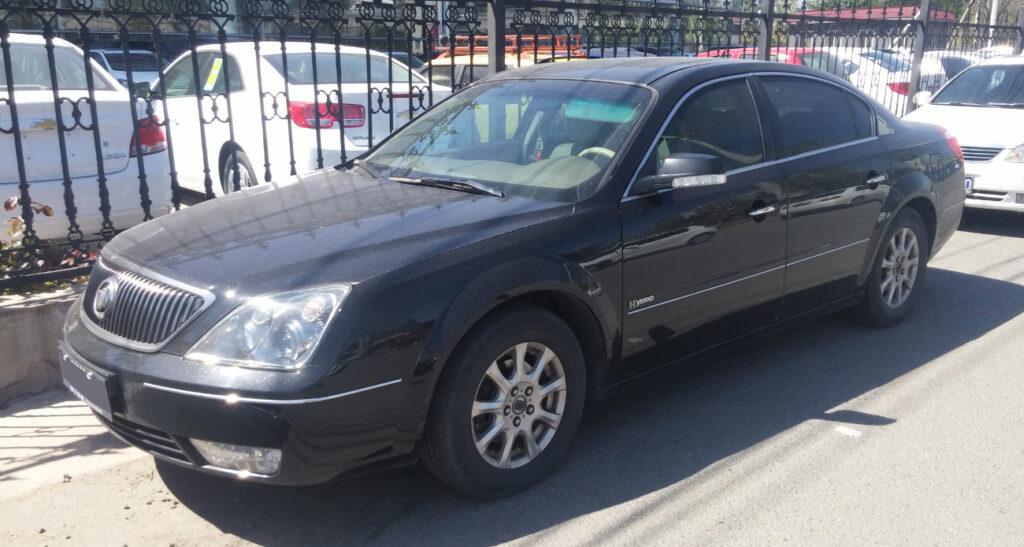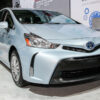Some hybrid cars hit the market with high hopes, only to fall flat with consumers. While many hybrids found success, others missed the mark due to high prices, lackluster fuel savings, or limited practicality. This list covers 15 hybrids that, despite their eco-friendly promise, couldn’t capture the interest they needed to stay on the road.
Contents
Honda CR-Z

The Honda CR-Z, with its sporty design and hybrid technology, seemed like a promising option. Marketed as a “sport hybrid,” it delivered only 130 horsepower from its 1.5-liter engine and electric motor. Without rear seats, it also lacked the practicality consumers often seek in compact hybrids. Though it achieved decent fuel economy, it couldn’t compete with more efficient Honda hybrids. Poor sales led to its discontinuation in 2016.
Chevrolet Malibu Hybrid

Chevrolet’s attempt to add a hybrid option to the Malibu lineup didn’t resonate as planned. Powered by a 1.8-liter engine and electric motor, it provided only modest fuel savings. Competing with models like the Toyota Camry Hybrid, the Malibu Hybrid struggled to stand out. The higher price for marginal efficiency gains discouraged buyers. Chevrolet eventually phased out this hybrid version.
Cadillac ELR

Luxury and hybrid efficiency seemed like a good combination for the Cadillac ELR, yet consumers weren’t convinced. With an MSRP above $75,000, it was priced well above other hybrids in its class. Unfortunately, its 157-horsepower electric motor failed to offer the power expected in a luxury car. Buyers felt they weren’t getting enough value, and the ELR was discontinued by 2016.
Volkswagen Jetta Hybrid

The Volkswagen Jetta Hybrid aimed to pair European style with hybrid performance, but its high price was a dealbreaker. Despite respectable fuel economy at around 42 mpg, it didn’t significantly outperform non-hybrid options in the Jetta lineup. Diesel versions of the Jetta also overshadowed it, making the hybrid version seem unnecessary. Sales remained low, and Volkswagen dropped the model by 2016.
Infiniti Q50 Hybrid

Infiniti attempted to capture luxury hybrid enthusiasts with the Q50 Hybrid, but its 3.5-liter V6 engine didn’t provide enough fuel savings. Buyers looking for luxury hybrids often sought better fuel economy, which competing models offered. Priced higher than the standard Q50, the hybrid model struggled to justify its value. Ultimately, Infiniti discontinued the hybrid Q50 due to tepid sales.
GMC Yukon Hybrid

Large and spacious, the GMC Yukon Hybrid offered a greener option in the full-size SUV market, but it missed the mark. Its hybrid engine delivered only slight fuel savings over the standard version, failing to justify the higher price. Released during an economic downturn, it was a tough sell to consumers focused on savings. Low demand led GMC to pull the model from its lineup.
BMW ActiveHybrid 7

BMW’s ActiveHybrid 7 combined luxury with hybrid technology but couldn’t gain a foothold. With a 4.4-liter V8, the car’s fuel efficiency gains were too minimal for eco-conscious buyers. Those seeking high-end hybrids preferred models with better gas mileage or fully electric options. BMW ultimately ceased production due to a lack of consumer interest.
Mercedes-Benz S400 Hybrid

Bringing hybrid tech to the luxury sedan segment, the Mercedes-Benz S400 Hybrid looked promising but struggled. Its 3.5-liter V6 provided only minor fuel savings compared to the regular S-Class. Buyers looking for luxury eco-options gravitated towards fully electric cars instead. The S400 Hybrid was eventually phased out due to consistently low sales.
Toyota Prius V

The Toyota Prius V expanded the Prius family with additional cargo space but came with less impressive mileage. While it provided more room than the standard Prius, its lower fuel economy left consumers unimpressed. Loyal Toyota customers often chose the original Prius or the more compact Prius C for better efficiency. Toyota discontinued the Prius V in 2017 due to slow sales.
Acura ILX Hybrid

The Acura ILX Hybrid hoped to merge luxury with eco-friendliness, but its underwhelming performance disappointed buyers. Offering only minimal gains in fuel economy, it failed to stand out in a competitive segment. Combined with slow acceleration and lackluster handling, the ILX Hybrid didn’t attract many buyers. Acura decided to discontinue it after only two years on the market.
Volkswagen Touareg Hybrid

Volkswagen’s Touareg Hybrid entered the luxury SUV market with a hefty price and little to offer in efficiency. Buyers found its fuel savings too minimal for the hybrid price, and competing models outshone it in value. While the Touareg itself had a loyal following, the hybrid variant didn’t gain traction. Volkswagen ultimately retired the hybrid version.
Ford Fusion Energi

The Ford Fusion Energi promised electric-only driving but offered a limited range that disappointed buyers. Only capable of about 20 miles in electric mode, it didn’t provide the battery power that plug-in drivers sought. Reduced cargo space due to battery placement also lowered its practicality. Ford later discontinued it, as sales didn’t meet expectations.
Kia Optima Hybrid

Although it boasted a sleek design, the Kia Optima Hybrid struggled to match competitors in fuel economy. The early models had marginal fuel savings, which didn’t justify the hybrid premium. Its battery placement compromised trunk space, which further deterred buyers. Kia eventually improved its hybrid technology, but the initial reception was lukewarm.
Audi Q5 Hybrid

Audi’s Q5 Hybrid attempted to bridge the gap between luxury and eco-friendliness but fell short in efficiency. Buyers noted that the fuel savings didn’t justify its higher price compared to the standard Q5. Competitors offered more efficient options, making the Q5 Hybrid less appealing. Audi soon replaced it with more advanced plug-in models.
Buick LaCrosse eAssist

The Buick LaCrosse eAssist was billed as a “mild hybrid,” but the fuel savings were minimal. Equipped with a small electric motor, it only slightly boosted fuel economy, which didn’t impress eco-conscious buyers. Traditional hybrids were far more efficient, so most buyers passed on this option. Buick phased out the eAssist system as it restructured its lineup.
This article originally appeared in MyCarMakesNoise.
More from MyCarMakesNoise
18 High-Performance SUVs That Rival Sports Cars

For those who want the thrill of a sports car but need the practicality of an SUV, there’s good news—high-performance SUVs now rival many top-tier sports cars. With powerful engines, quick acceleration, and advanced handling, these vehicles offer a perfect balance between speed and versatility. Read More.
18 High-Tech Car Features That Ended Up Being Useless

As cars become more advanced, automakers continue to add high-tech features meant to enhance the driving experience. However, not all of these innovations have lived up to their promises. Read More.
14 Iconic Streamlined Trains That Shaped Travel Design

Streamlined trains have long been symbols of speed, efficiency, and innovative design. Over the years, they’ve transformed the way we travel, combining engineering breakthroughs with sleek aesthetics. Read More.














